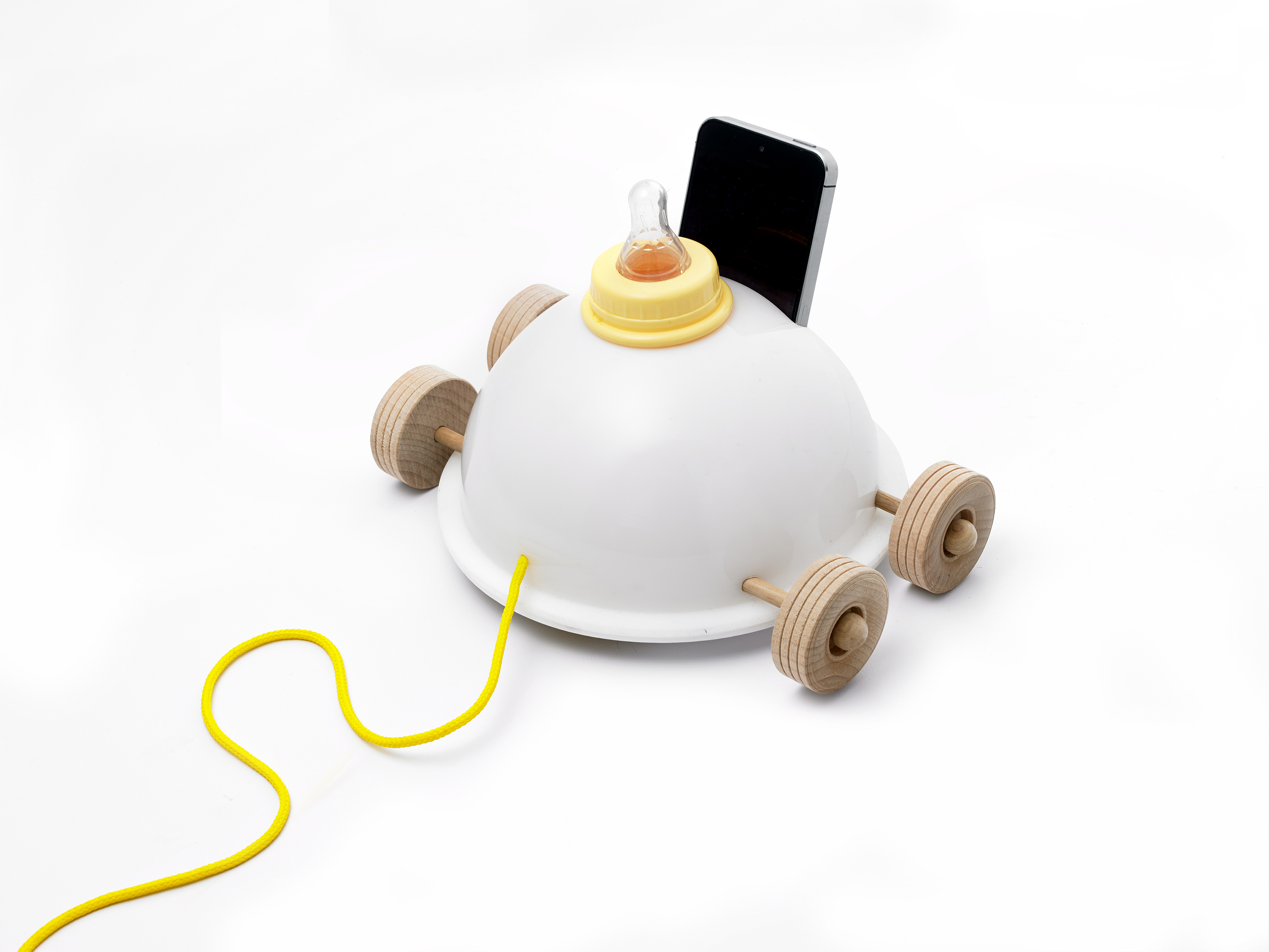Designing for Ambivalence
In 2019 I completed a practice-based PhD at Goldsmiths, University of London. My research, called Designing for Ambivalence: a designer’s research into the role of smartphones for mothers and young children, investigated the role of smartphones during the care of young children, focussing on situations of mothers who have the primary role of childcare.
I developed a series of speculative, experimental and semi-functioning artefacts that gave form to behaviours and that were used as conversational probes with participants and audiences to better understand the complex role of this device, felt as both empowering and intrusive in contemporary constructions of motherhood.
The research was informed by my experiences as industrial designer and mother, and by perspectives from speculative research-through-design, feminist design research, material culture and psychoanalysis. It was presented to audiences (academic and non-academic) at public engagement events at the Freud Museum, Victoria & Albert Museum, King’s College London and Goldsmiths College.
Producing both attraction and rejection, the artefacts invited conversations about practices, often private, that are ridden with ambivalence and guilt. My PhD research is an example of the possibilities for design to expose unintended uses of technology, to challenge conventional uncomplicated user portrayals by depicting mothers as complex users, and to explore potentials for change.
My PhD supervisors were prof. Bill Gaver and prof. Janis Jefferies.
 A phone on wheels that gets irritated when used as a toy, protesting “I am not a toy”
A phone on wheels that gets irritated when used as a toy, protesting “I am not a toy” Fabrications
Fabrications
Exploratory drawings
 Small edition publication of exploratory drawings, 2019. Goldsmiths
Small edition publication of exploratory drawings, 2019. Goldsmiths Public engagement at the Victoria and Albert Museum London, 2017
Public engagement at the Victoria and Albert Museum London, 2017Public display at the Freud Museum London, 2017
Publications:
- PhD thesis: Designing for Ambivalence: a designer’s research into the role of smartphones for mothers and young children. 2019. Yurman, P. Goldsmiths, University of London- Maternal Machines. 2022. Position pictorial paper for the 2nd International Workshop on Designerly HRI Knowledge for ACM/IEEE International Conference on Human-Robot Interaction. March 2022.
- How was it made? A Smartphone In the Nursery ACM Interactions Magazine. January 2020
- Demo Hour ACM Interactions Magazine. November 2019.
- A Smartphone in the Nursery. 2019.Yurman, P. Research Through Design Conference, Delft University of Technology, 18-22 March 2019
-Smartphones and Constructions of Motherhood (position paper). Yurman, P. Technology to Mediate Role Conflict in Motherhood, ACM CHI 2019 workshop, Glasgow http://www.techformotherhood.com/
- Designing for Ambivalence: Mothers, Transitional Objects and Smartphones. 2017. Yurman, P. ACM CHI 2017, Denver, Colorado.


Ambivalent Objects are critical artefacts that suggest smartphones as pacifiers, evoking their intrusion into the world of mother and infant. They were used as conversational artefacts with mothers, and invited conversations about difficult experiences using smartphones during childcare.
 This artefact uses the metaphor of a pet. The phone is put to sleep, snorring while it charges and suggesting a nap, a concept easily understood by young children. It invites both adult and child to take a break from the phone.
This artefact uses the metaphor of a pet. The phone is put to sleep, snorring while it charges and suggesting a nap, a concept easily understood by young children. It invites both adult and child to take a break from the phone.
Workshops with participants, using the artefacts as probes.
 ACM Interactions magazine, November 2019
ACM Interactions magazine, November 2019
 ACM Interactions magazine, January 2020
ACM Interactions magazine, January 2020

Paper presented at the Research Through Design conference, Delft University of Technology, 2019